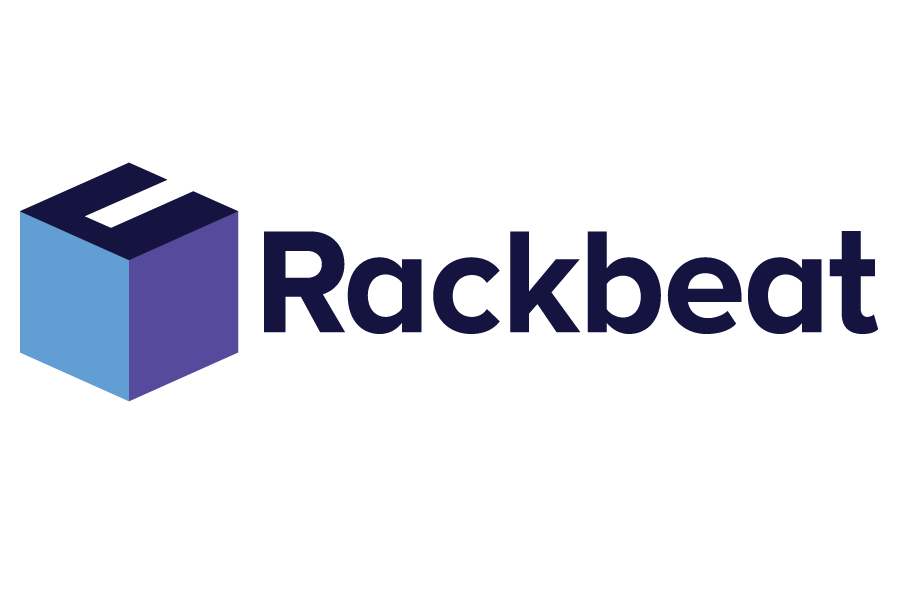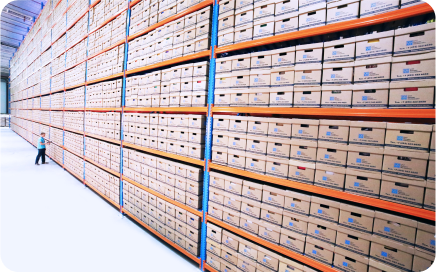Dropshipping: Pros and Cons
By Rackbeat October 25, 2021

Curious about what Dropshipping is? This post will list the pros and cons of this business model, and if Dropshipping is still worth it in 2023
What is Dropshipping?
A traditional e-commerce business typically has a warehouse with inventory of some sort. It can be a bonafide warehouse (capital W), with warehouse workers that pick products from distinct shelves, a warehouse hotel, or a back room in a physical store, if you’re that sort of business. If you’re a completely new business, you might just have a basement room with different products at your house. When a sales order comes in the business has to go down to the warehouse, pick the product(s), and ship it to the customer.
Dropshipping businesses operate a bit differently: instead of having a physical warehouse that the business itself operates, the dropshipping business sends sales orders directly to the supplier. The supplier then sends the product(s) directly to the end customer, and the dropshipping business takes a profit.
That way, the business avoids having to manage inventory levels and the operating costs that come with operating a warehouse. Additionally, the dropshipping business avoids having to pick, pack, and ship the right products – and the costs that these tasks incur.
We have briefly covered one of the pros of dropshipping, namely lower operating costs and fewer workloads. But in the following chapters we’ll cover the pros and cons of dropshipping.

A customer places an order in your webshop. Let’s say you priced it at $50. You send the order on to your supplier, who has the same product priced at $35. Your supplier then sends the product directly to the customer, and you keep the $15 profit.
Why Dropshipping?
There are a lot of good reasons to start a dropshipping company. One good reason is that it’s easy, quick, and cheap to get off the ground. It only takes a little bit of money to buy a domain name, and the services you use to run the business. But because you never have any products in a physical location, that means you don’t have to invest in warehouse rent, or an inventory of products. You’re not bound by having physical store(s) either, so if you want to run the business from the comfort of your couch, that’s absolutely a possibility. Should the company fail, you don’t have money bound in inventory or rent/property, so you can quickly move on to your next project.
Dropshipping with Rackbeat
Even though you don’t have a physical warehouse it’s still important to keep an overview, of which orders have been processed on your end. In short: you need proper order management. The orders that are placed in your webshop are automatically created in Rackbeat, and with just a few clicks, you can convert these to a dropshipping order. Then the order will then be placed at your supplier, and the delivery address will be the customers, but the billing address will be your company – all through Rackbeat.
In short, it brings you closer to your supplier, and you are left with fewer tasks concerning operations of your dropshipping business, and you can use the time saved to focus on growing your business. If you are nodding along in agreement right now – then you’re ready to dropship with Rackbeat!
If you want to try this out, then register for a free trial!
Pros of Dropshipping
1. It takes less capital to get off the ground
There are a lot of elements of a traditional webshop that requires significant capital. This includes operating a physical warehouse and tracking inventory levels and movements. That’s not a problem with dropshipping because you don’t have to think about these tasks, let alone the costs associated with them.
2. It takes less time and energy to operate
You’re not spending time operating a warehouse – there isn’t one right? That means you don’t have to pick, pack and ship orders that are handled by your supplier. When you’re doing accounting, you don’t have to keep track of how much value is bound in inventory.
The work that goes into returned products is also drastically less than if you were to register returns (maybe even repair), and send new products to the customer yourself. You don’t have to worry about purchasing, or making sure that inventory levels are stocked to be able to meet demand. That also means you don’t need a designated purchaser either, should your business grow.
3. Low overhead
When you establish your dropshipping business you’re not going to have any significant operational costs. As we’ve covered, you might have some monthly costs, such as to a webhotel, or maybe even Rackbeat. But these costs are very low compared to a traditional business with a physical warehouse. These costs can of course increase over time, if you are spending money on marketing (not a bad idea by the way), but the costs will still be lower than a traditional business.
4. Broad selection of products
You don’t have to commit to just one supplier. That means that you can choose products from many different suppliers, in many different categories. It is worth noting though, that the general consensus is that you should keep to one theme or product catalogue, for example makeup and cosmetics.
5. Agility and scalability
If you determine that makeup and cosmetics aren’t selling very well, you can quickly restructure your business to sell phone covers instead. This means that you can quickly test product-market fit, to determine where supply and demand is just right to make a nice profit.
It’s this same property that makes dropshipping so scalable – your ability to sell isn’t bound by having products in stock. If you’re getting 10 times the orders coming in, when you make the switch to selling phone covers, it doesn’t make a noticeable difference workload-wise – definitely much less than if you were operating a traditional webshop. That means that you can always match your supply to the most profitable demand, quickly, easily, and without restructuring your workflows.

Cons of Dropshipping
1. Lower profit margins
Your overhead is low, but so are your profits. For every sales order you receive, the majority of the profit goes to the supplier. Even if you set your margins high, you’ll still incur your regular operating costs, plus whatever variable costs may be incurred, when a product is wrongly delivered or is damaged in shipping. This cuts into the margins you can expect when dropshipping.
2. Problems with inventory levels
Your supplier doesn’t always have the products your customers want in stock. Updating inventory levels on your webshop can be a time-consuming process. There are some options out there that lets you synchronize inventory levels with your supplier, but they are often very difficult to set up. But you can run into issues with items being out of stock, and not being able to meet customer demand, and therefore it deserves a spot on this list.
3. Shipping and Deliveries
When you’re working with several different suppliers there are typically different delivery fees from supplier to supplier. This can make it more difficult to accurately calculate shipping costs, if one of your customers places one order in your webshop containing products that come from different suppliers.
It can be a good idea to include delivery fees in your sales price, but this often means that your profit margins will shrink.
4. You’ll get blamed
If anything goes wrong, it’s your fault. If one of your suppliers makes mistakes while shipping, something is broken in transport, or similar, it’s you who receives the complaint. You’ll then need to contact the supplier every time there is a mistake, or simply write off that profit.
5. Slim branding possibilities
When you’re using dropshipping, you’re purchasing finished products from a third party. It’s important to note that you (usually) can’t slap your logo on what you’re selling. That can be a difficult pill to swallow if you’re trying to build a brand.
6. Less control of the User Experience
Because your supplier is handling picking, packing and shipping, you’re leaving a large part of the customer experience up to a third party. This point is really a summation of 4. “You’ll get blamed” and 5. “Slim branding possibilities”. If your customer has a negative experience it’s really limited what you can do. You can’t brand your packaging with a personal note either. Less control over the customer experience can reduce customer loyalty, but it really depends on the quality and relationship of the suppliers you use.
Dropshipping in 2023
It IS easy to start a dropshipping business in 2023. In fact, it’s easier than ever before, in part due to new marketing channels that make reaching your target audience incredibly easy. In short: the digitalization, globalization, and automization of heavy administrative sales processes have opened up a market that has previously been reserved for established businesses.
There are still things you should keep in mind when launching your business, so you’ll avoid the pitfalls that sink a lot of new dropshippers.
- Don’t overthink the small stuff; your logo, the business’ name, exact phrases to use in your marketing material and so on. These are things you can revise when you’ve found a profitable niche, where there are customers, and you’ve established a solid supply chain, and communications/deals with the suppliers you wish to use.
- What you should be thinking about is: Where am I adding concrete value to my customers?. If you can offer your customers relevant information about the products they’re buying, then you’re competing on a higher level than the generic dropshippers in your niche.
- Speaking of niche: you should find a specific niche market and an accompanying specific product to sell to this market – at least you should if you want to compete with the biggest and market-leading webshops.
- Think long-term! Rome wasn’t built in a day, and a successful dropshipping business isn’t either. How long this takes varies from business to business, but be aware that it can take several years before you find the right product-market fit, the right suppliers, and the right selection of products.
- Great service is an often overlooked aspect in dropshipping. Be aware that mastering customer service isn’t always easy when you’re operating a dropshipping business. But if your customers are left with the impression that you’re willing to go the extra mile – when something goes wrong and you swoop in to solve it without a fuss, for example – then you’ll have the sort of customer loyalty that you simply can’t pay for.
Interested in dropshipping, inventory & order management and supply chain facts?
Then try our monthly content newsletter.
You will get the latest and greatest insights, facts and stories from the world of inventory, dropshipping, order and supply chain management!



